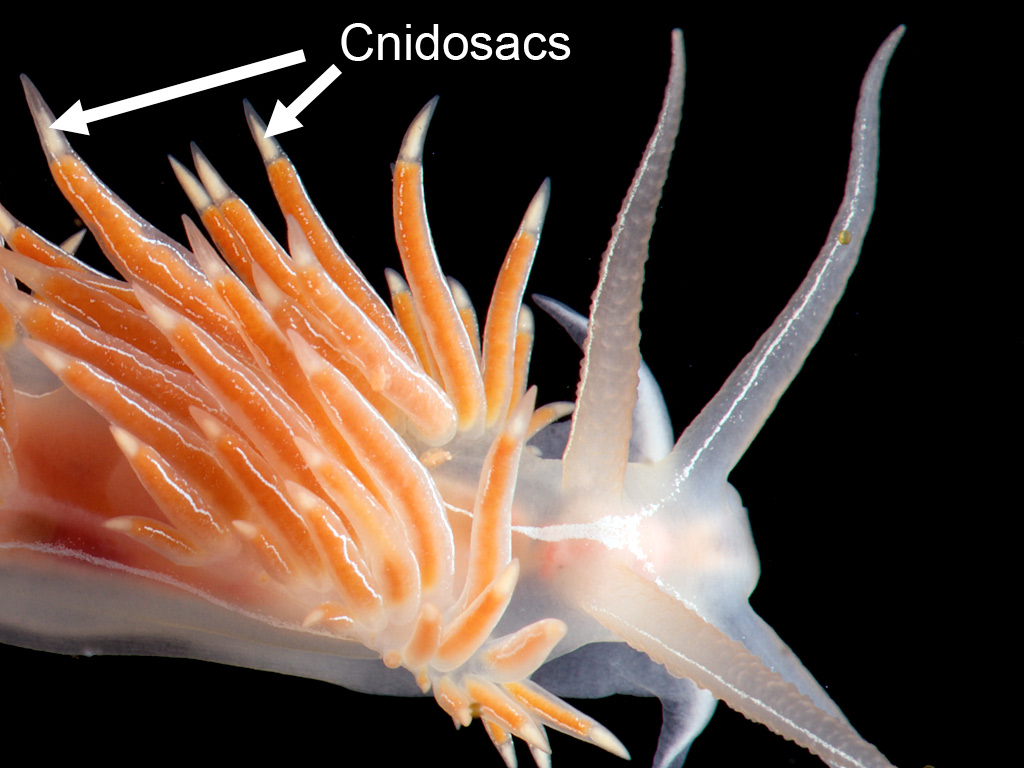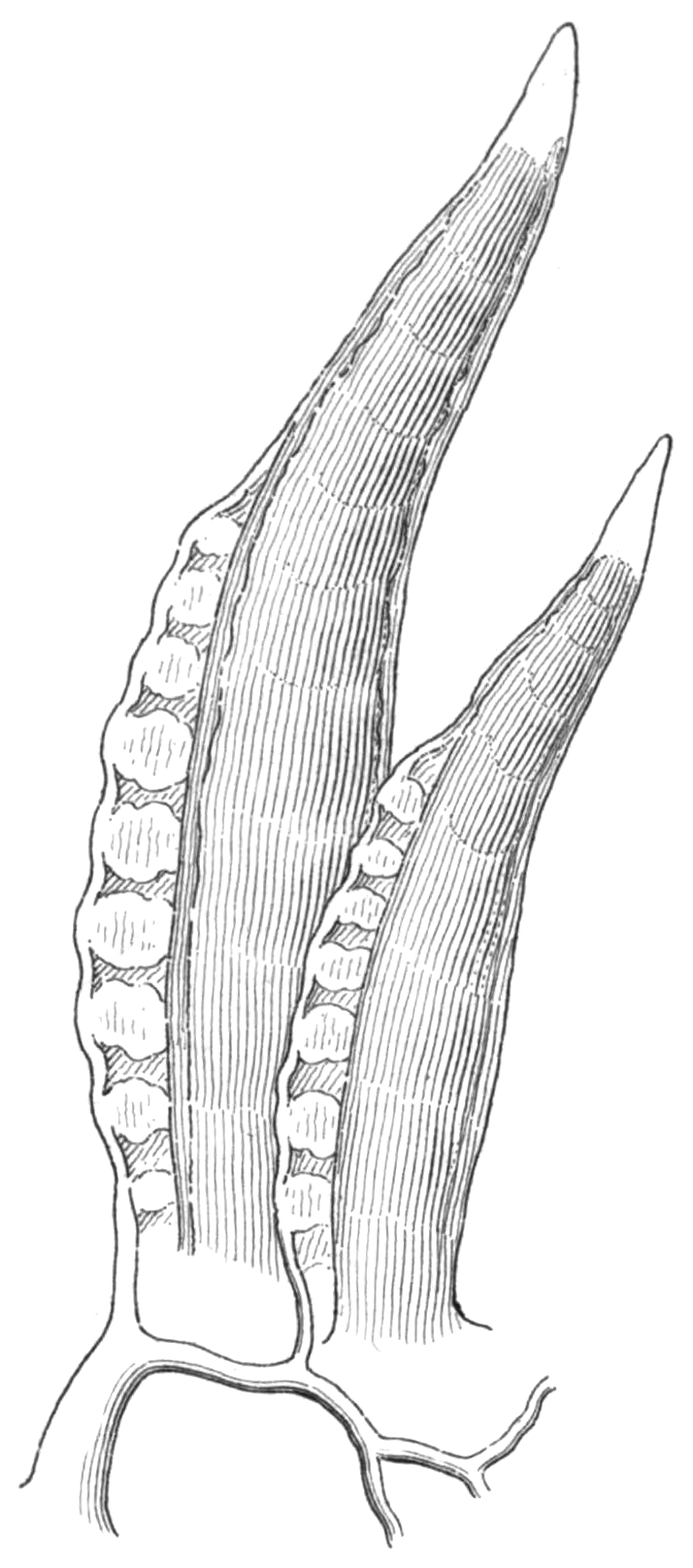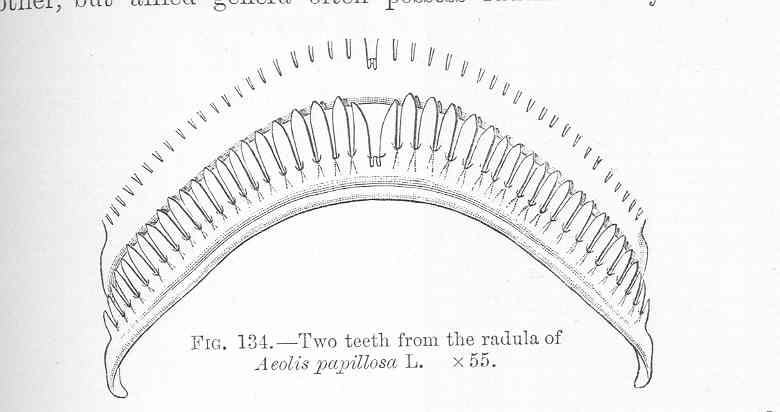|
Aeolidiella Alderi
''Aeolidiella alderi'' is a species of sea slug, an aeolid nudibranch in the family Aeolidiidae.Gofas, S. (2015)''Aeolidiella alderi'' (Cocks, 1852).In: MolluscaBase (2015). Accessed through: World Register of Marine Species on 2015-11-12 It is native to northwestern Europe where it occurs in the intertidal zone. It is a predator and feeds on sea anemones. Description This is a small nudibranch that can reach a length of . The body shape is flattened and broad, but not as wide as ''Aeolidia papillosa'' and '' Aeolidia filomenae''. The pair of oral tentacles on the head are longer than the rhinophores. The dorsal surface of the body has up to 16 oblique rows of cerata on either side. These are outgrowths of the body wall that increase the area available for respiration, and contain extensions of the gut, so vary in colour according to the animal's diet. The first row of cerata have reduced digestive gland extensions and are white, forming a collar. The cerata are tipped with cni ... [...More Info...] [...Related Items...] OR: [Wikipedia] [Google] [Baidu] |
Animal
Animals are multicellular, eukaryotic organisms in the Kingdom (biology), biological kingdom Animalia. With few exceptions, animals Heterotroph, consume organic material, Cellular respiration#Aerobic respiration, breathe oxygen, are Motility, able to move, can Sexual reproduction, reproduce sexually, and go through an ontogenetic stage in which their body consists of a hollow sphere of Cell (biology), cells, the blastula, during Embryogenesis, embryonic development. Over 1.5 million Extant taxon, living animal species have been Species description, described—of which around 1 million are Insecta, insects—but it has been estimated there are over 7 million animal species in total. Animals range in length from to . They have Ecology, complex interactions with each other and their environments, forming intricate food webs. The scientific study of animals is known as zoology. Most living animal species are in Bilateria, a clade whose members have a Symmetry in biology#Bilate ... [...More Info...] [...Related Items...] OR: [Wikipedia] [Google] [Baidu] |
Nudibranch
Nudibranchs () are a group of soft-bodied marine gastropod molluscs which shed their shells after their larval stage. They are noted for their often extraordinary colours and striking forms, and they have been given colourful nicknames to match, such as "clown", "marigold", "splendid", "dancer", "dragon", or "sea rabbit". Currently, about 3,000 valid species of nudibranchs are known.Ocean Portal (2017)A Collage of Nudibranch Colors Smithsonian National Museum of Natural History. Retrieved 17 April 2018. The word "nudibranch" comes from the Latin "naked" and the Ancient Greek () "gills". Nudibranchs are often casually called sea slugs, as they are a family of opistobranchs (sea slugs), within the phylum Mollusca (molluscs), but many sea slugs belong to several taxonomic groups which are not closely related to nudibranchs. A number of these other sea slugs, such as the photosynthetic ''Sacoglossa'' and the colourful Aglajidae, are often confused with nudibranchs. Distribut ... [...More Info...] [...Related Items...] OR: [Wikipedia] [Google] [Baidu] |
North Sea
The North Sea lies between Great Britain, Norway, Denmark, Germany, the Netherlands and Belgium. An epeiric sea on the European continental shelf, it connects to the Atlantic Ocean through the English Channel in the south and the Norwegian Sea in the north. It is more than long and wide, covering . It hosts key north European shipping lanes and is a major fishery. The coast is a popular destination for recreation and tourism in bordering countries, and a rich source of energy resources, including wind and wave power. The North Sea has featured prominently in geopolitical and military affairs, particularly in Northern Europe, from the Middle Ages to the modern era. It was also important globally through the power northern Europeans projected worldwide during much of the Middle Ages and into the modern era. The North Sea was the centre of the Vikings' rise. The Hanseatic League, the Dutch Republic, and the British each sought to gain command of the North Sea and access t ... [...More Info...] [...Related Items...] OR: [Wikipedia] [Google] [Baidu] |
Ireland
Ireland ( ; ga, Éire ; Ulster Scots dialect, Ulster-Scots: ) is an island in the Atlantic Ocean, North Atlantic Ocean, in Northwestern Europe, north-western Europe. It is separated from Great Britain to its east by the North Channel (Great Britain and Ireland), North Channel, the Irish Sea, and St George's Channel. Ireland is the List of islands of the British Isles, second-largest island of the British Isles, the List of European islands by area, third-largest in Europe, and the List of islands by area, twentieth-largest on Earth. Geopolitically, Ireland is divided between the Republic of Ireland (officially Names of the Irish state, named Ireland), which covers five-sixths of the island, and Northern Ireland, which is part of the United Kingdom. As of 2022, the Irish population analysis, population of the entire island is just over 7 million, with 5.1 million living in the Republic of Ireland and 1.9 million in Northern Ireland, ranking it the List of European islan ... [...More Info...] [...Related Items...] OR: [Wikipedia] [Google] [Baidu] |
North Atlantic Ocean
The Atlantic Ocean is the second-largest of the world's five oceans, with an area of about . It covers approximately 20% of Earth's surface and about 29% of its water surface area. It is known to separate the "Old World" of Africa, Europe and Asia from the "New World" of the Americas in the European perception of the World. The Atlantic Ocean occupies an elongated, S-shaped basin extending longitudinally between Europe and Africa to the east, and North and South America to the west. As one component of the interconnected World Ocean, it is connected in the north to the Arctic Ocean, to the Pacific Ocean in the southwest, the Indian Ocean in the southeast, and the Southern Ocean in the south (other definitions describe the Atlantic as extending southward to Antarctica). The Atlantic Ocean is divided in two parts, by the Equatorial Counter Current, with the North(ern) Atlantic Ocean and the South(ern) Atlantic Ocean split at about 8°N. Scientific explorations of the Atlant ... [...More Info...] [...Related Items...] OR: [Wikipedia] [Google] [Baidu] |
Cnidocyte
A cnidocyte (also known as a cnidoblast or nematocyte) is an explosive cell containing one large secretory organelle called a cnidocyst (also known as a cnida () or nematocyst) that can deliver a sting to other organisms. The presence of this cell defines the phylum Cnidaria (corals, sea anemones, hydrae, jellyfish, etc.). Cnidae are used to capture prey and as a defense against predators. A cnidocyte fires a structure that contains a toxin within the cnidocyst; this is responsible for the stings delivered by a cnidarian. Structure and function Each cnidocyte contains an organelle called a cnida, cnidocyst, nematocyst, ptychocyst or spirocyst. This organelle consists of a bulb-shaped capsule containing a coiled hollow tubule structure attached to it. An immature cnidocyte is referred to as a cnidoblast or nematoblast. The externally oriented side of the cell has a hair-like trigger called a cnidocil, which is a mechano- and chemo-receptor. When the trigger is activated, the ... [...More Info...] [...Related Items...] OR: [Wikipedia] [Google] [Baidu] |
Cnidosac
A cnidosac is an anatomical feature that is found in the group of sea slugs known as aeolid nudibranchs, a clade of marine opisthobranch gastropod molluscs. A cnidosac contains cnidocytes, stinging cells that are also known as cnidoblasts or nematocysts. These stinging cells are not made by the nudibranch, but by the species that it feeds upon. However, once the nudibranch is armed with these stinging cells, they are used in its own defense. Description and functions The sea slugs within the nudibranch clade Aeolidida have protruding cerata (singular "ceras") on their dorsal surface. At the tip of each ceras is a small sac in which nematocysts (stinging cells) are stored. These nematocysts originate in the cnidarians (such as sea anemones, hydroids, jellyfish, corals, siphonophores, etc.) that are the food source for aeolid nudibranchs. Example ''Glaucus atlanticus'' is a blue pelagic aeolid nudibranch. Individuals in this species can be dangerous for humans to handle; the cnidosac ... [...More Info...] [...Related Items...] OR: [Wikipedia] [Google] [Baidu] |
Cerata
:''The tortrix moth genus ''Cerata'' is considered a junior synonym of ''Cydia. Cerata, singular ceras, are anatomical structures found externally in nudibranch sea slugs, especially in aeolid nudibranchs, marine opisthobranch gastropod mollusks in the clade Aeolidida. The word ceras comes from the Greek word "κέρας", meaning "horn", a reference to the shape of these structures. Cerata are dorsal and lateral outgrowths on the upper surfaces of the body of these nudibranchs. Function Cerata greatly extend the surface area of nudibranchs and aid in respiration, the process of gas exchange for metabolic use. Cerata are also used, in some cases, for attack and defense. In many aeolid nudibranchs, the digestive system extends into the cerata. These nudibranchs eat stinging celled animals (Cnidarians) such as anemones, hydroids and sea fans or Portuguese men o' war. The stinging cells or nematocysts are passed unharmed through the digestive system to cnidosacs at the tips of t ... [...More Info...] [...Related Items...] OR: [Wikipedia] [Google] [Baidu] |
Rhinophore
A rhinophore is one of a pair of chemosensory club-shaped, rod-shaped or ear-like structures which are the most prominent part of the external head anatomy in sea slugs, marine gastropod opisthobranch mollusks such as the nudibranchs, sea hares (Aplysiomorpha), and sap-sucking sea slugs (Sacoglossa). Etymology The name relates to the rhinophore's function as an organ of "smell". ''Rhino-'' means nose from Ancient Greek ῥίς ''rhis'' and from its genitive ῥινός ''rhinos''. "Phore" means "to bear" from New Latin ''-phorus'' and from Greek -phoros (φορος) "bearing", a derivative of ''phérein'' (φέρειν). Function Rhinophores are scent or taste receptors, also known as chemosensory organs situated on the dorsal surface of the head. They are primarily used for distance chemoreception and rheoreception (response to water current). The "scents" detected by rhinophores are chemicals dissolved in the sea water. The fine structure and hairs of the rhinophor ... [...More Info...] [...Related Items...] OR: [Wikipedia] [Google] [Baidu] |
Tentacle
In zoology, a tentacle is a flexible, mobile, and elongated organ present in some species of animals, most of them invertebrates. In animal anatomy, tentacles usually occur in one or more pairs. Anatomically, the tentacles of animals work mainly like muscular hydrostats. Most forms of tentacles are used for grasping and feeding. Many are sensory organs, variously receptive to touch, vision, or to the smell or taste of particular foods or threats. Examples of such tentacles are the eyestalks of various kinds of snails. Some kinds of tentacles have both sensory and manipulatory functions. A tentacle is similar to a cirrus, but a cirrus is an organ that usually lacks the tentacle's strength, size, flexibility, or sensitivity. A nautilus has cirri, but a squid has tentacles. Invertebrates Molluscs Many molluscs have tentacles of one form or another. The most familiar are those of the pulmonate land snails, which usually have two sets of tentacles on the head: when extended ... [...More Info...] [...Related Items...] OR: [Wikipedia] [Google] [Baidu] |
Aeolidia Filomenae
''Aeolidia filomenae'' is a species of sea slugs, an aeolid nudibranch, a marine gastropod mollusc in the family Aeolidiidae. Previously confused with ''Aeolidia papillosa'', this species occurs on coasts of the NE Atlantic Ocean from Scotland south to Portugal.Bouchet, P. (2016)''Aeolidia filomenae'' Kienberger, Carmona, Pola, Padula, Gosliner & Cervera, 2016.In: MolluscaBase (2016). Accessed through: World Register of Marine Species on 2016-06-29 Distribution This nudibranch species lives on the Atlantic coast of The British Isles and Europe Europe is a large peninsula conventionally considered a continent in its own right because of its great physical size and the weight of its history and traditions. Europe is also considered a Continent#Subcontinents, subcontinent of Eurasia .... Description ''Aeolidia filomenae'' can be identified by its large number of slightly flattened, hooked cerata on its body except for a triangular area that extends from the rhinophores to ... [...More Info...] [...Related Items...] OR: [Wikipedia] [Google] [Baidu] |
Aeolidia Papillosa
''Aeolidia papillosa'', known as the common grey sea slug, is a species of nudibranch in the family Aeolidiidae.Gofas, S''Aeolidia papillosa''.In: MolluscaBase (2017). Accessed through: World Register of Marine Species (WoRMS), 26 July 2017. Distribution This nudibranch species thrives in cold-temperate waters in the Northern Hemisphere on the Atlantic coast of The British Isles and Northern Europe, the Atlantic coast of North America, and the north Pacific Coast of North America. This species has recently been shown to have a more restricted distribution than previously thought, with animals from California, France and Chile being three other species. Description ''Aeolidia papillosa'' can be easily identified by its large number of cylindrical cerata covering its body except for a triangular area that extends from the rhinophores to the mid dorsum. The color is variable, usually with speckled darker markings in the head and back regions. To distinguish from different Aeo ... [...More Info...] [...Related Items...] OR: [Wikipedia] [Google] [Baidu] |










